When it comes to barbecued meats, two heavyweights always come to mind – brisket and pulled pork. Both cuts are beloved by BBQ enthusiasts nationwide, but the debate over which is better rages on. Some swear by pulled pork’s tender and juicy flavor, while others can’t resist the smoky, melt-in-your-mouth appeal of brisket. But what’s the difference between these two BBQ staples, and which one comes out on top?
In this article, we’ll take a closer look at the characteristics of brisket and pulled pork and explore the pros and cons of each. So sit back, grab a cold drink, and prepare to settle one of BBQ’s biggest debates – brisket vs pulled pork.
What is Brisket
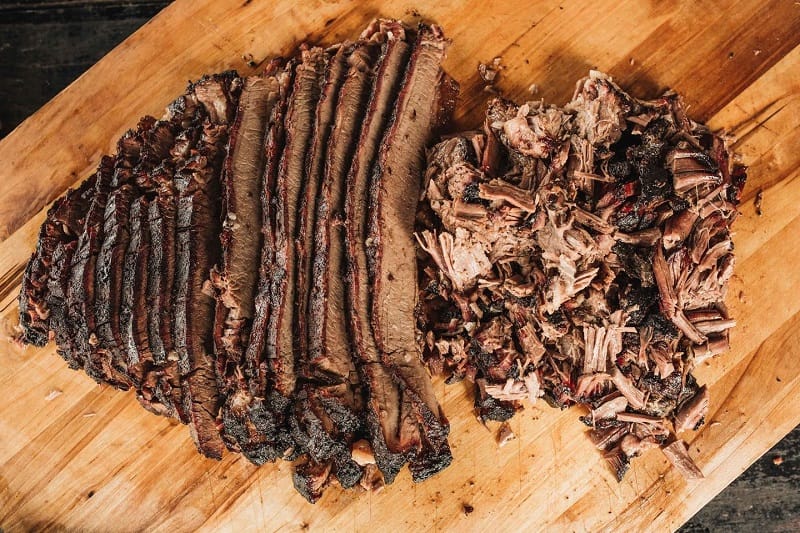
Brisket is a delicious beef cut from a cow’s lower chest area. This area is well-exercised, giving the meat a robust, meaty flavor and mouthwatering texture. It is one of the nine primal cuts of beef, and each cow has two. Brisket is a triangular-shaped cut taken from the animal’s breast or lower chest. It is often used to make corned beef and pastrami but can also be cooked in various ways, including smoking and slow cooking. As the cow stands and walks around, its chest muscles get a good workout, making brisket a hearty and flavorful option for any meat lover.
What is Pulled Pork
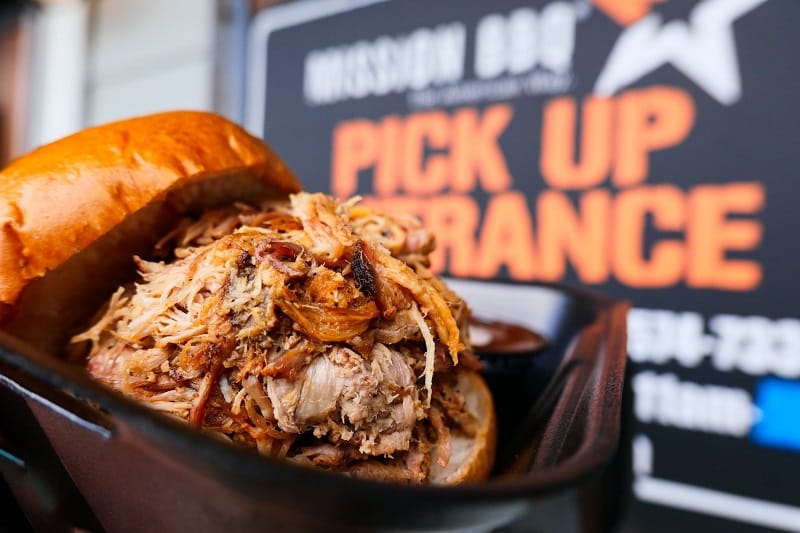
Pulled pork is a favorite American barbecue dish enjoyed by many. It is traditionally made from slow-cooked pork shoulder that is shredded and mixed with barbecue sauce to create a deliciously tender and flavorful dish. Some people may refer to it as shredded pork, but there is no real difference. The pork shoulder is the most common cut used to make pulled pork, a hog’s entire front leg, and shoulder.
To make it, pantry spices such as brown sugar, chili, paprika, garlic powder, salt, black pepper, and cayenne are mixed and rubbed all over the meat before it is slow-cooked to perfection. It is often served on plain bread with barbecue sauce and coleslaw or by itself. Whether enjoyed at a backyard barbecue or a restaurant, pulled pork is a tasty and satisfying meal that people of all ages will love.
Brisket and Pulled Pork: The Difference
When it comes to barbecue, few dishes are as iconic as brisket and pulled pork. Both of these meats are cooked low and slow, producing a depth of flavor and tenderness that is hard to match. However, there are some key differences to note between the two.
One obvious difference is the cut of meat used. Brisket comes from the breast of the cow, while pulled pork is typically made from the shoulder of a pig.
Additionally, brisket is often more expensive than pulled pork due to its tougher nature. While both require low and slow cooking, pulled pork is generally considered easier to prepare. The fatty texture of pork shoulder lends itself well to smoking and results in a sweeter flavor than beef brisket.
Beef Brisket Vs Pulled Pork Nutrition
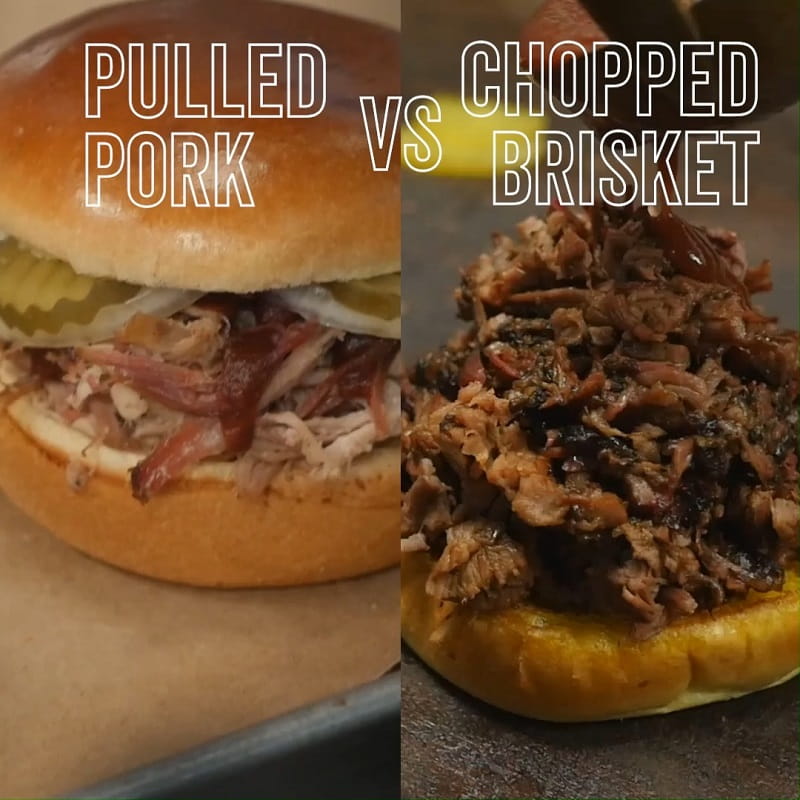
In terms of calories, pork has a higher count with 242 kcal per 100g as opposed to 157 kcal per 100g in brisket. However, the spices and sauces used can make a big difference in the overall health benefits of the meat.
- While both are high in protein and fat, the lean cut of pulled pork is better, with around 167 calories per 100g serving compared to the 242 calories per serving of brisket. Pulled pork is lower in fat than brisket, making it a good choice for those looking to watch their fat intake.
- In terms of minerals, beef is much higher in iron and zinc, while pork has a slight advantage in magnesium and potassium.
Brisket Vs Pulled Pork Calories
Brisket clocks in at around 242 calories per 100g, while pulled pork has 167 calories per 100g. However, it’s important to note that the cut and cooking method can impact these numbers.
For example, a lean beef brisket cut may only have around 175 calories per serving, whereas pulled pork can run up to 310 calories per ounce.
The Fat Levels Differ Between Brisket And Pulled Pork
Brisket and pulled pork are two popular options for BBQ, but the fat levels differ between the two. Brisket is commonly considered slightly healthier than pulled pork because it is leaner and contains less fat. The saturated fat content in brisket and pulled pork makes these meats unhealthy, increasing “bad” LDL cholesterol.
Pulled pork is lower in fat than brisket, with only about 10% of its calories from fat. Pork has 89% more fat than brisket. Understanding the fat levels in these meats can help make informed decisions about dietary intake.
Price Difference Between Brisket and Pulled Pork
One factor that cannot be ignored is the price difference between the two meats. Brisket can cost up to three to four times more per pound than pulled pork. This is because brisket comes from a tougher cut of beef and requires more preparation and cooking time. On the other hand, pulled pork is generally made from pork butt or shoulder, a more affordable meat cut.
While some may prefer the taste of brisket, pulled pork can be just as delicious and budget-friendly. So, pulled pork may be the way for those who want to enjoy a delicious barbecue without breaking the bank.
Brisket vs Pulled Pork: Texture and Taste
When it comes to the debate of brisket versus pulled pork, texture and taste, play a significant role in deciding which is better. Brisket is a slow-cooked beef cut with a complex, intense flavor that might not be for everyone. On the other hand, pulled pork is a juicy, tender pork cut with a sweeter, smokier flavor that many find more appealing.
While both are excellent options for any barbecue, the texture of brisket tends to be drier and firmer, while pulled pork is more moist and tender.
The Best Cut of Meat for Brisket and Pulled Pork
When it comes to cooking brisket and pulled pork, it’s no secret that they require time and patience. However, their differences lie in their cost, flavors, and cooking difficulty. Brisket is considered the best cut of beef, while pulled pork is made from a smoked pork butt. Brisket is tough and needs to be cooked slower on low heat, but it’s more expensive than pork shoulder.
On the other hand, pulled pork is easier to cook and is generally less expensive than brisket. It all comes down to personal preference and taste. Don’t forget to pair each meat with different sauces and sides to enhance their flavors.
Read more:
Cooking Difficulty: Brisket vs Pulled Pork
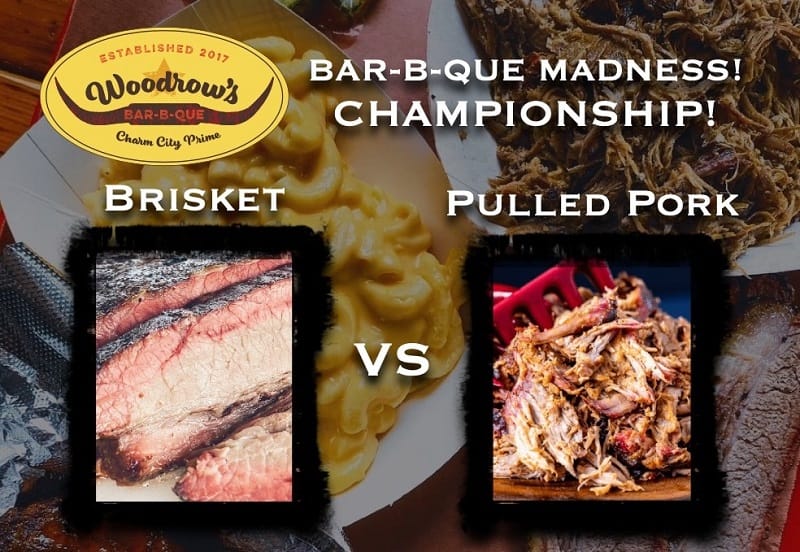
When it comes to smoking meats, there is a debate about which is more difficult to cook: brisket or pulled pork. While both require low and slow cooking, brisket is usually considered more challenging due to its tougher cut of meat. However, that doesn’t mean pulled pork is a breeze, either. Regardless of which is chosen, the key is to carefully monitor the temperature throughout the cooking process to ensure it is perfectly cooked.
How Do You Choose Between Brisket And Pulled Pork When Planning A Barbecue Meal, And What Factors Should You Consider?
When choosing between brisket and pulled pork, it’s essential to consider the type of event you’re hosting. Brisket is typically a classic choice for larger parties, such as weddings and corporate events, while pulled pork is more often associated with casual backyard barbecues. Additionally, brisket is generally more expensive than pulled pork, which could also be a factor in your decision.
- In terms of taste and texture, brisket is known for its tenderness and strong flavor, while pulled pork is more moist and savory. Additionally, brisket is best served with a robust barbecue sauce, while pulled pork is often served with a sweeter, tangier sauce. When choosing between the two options, consider the type of sauce you’d like to serve and the overall flavor profile you’d like to achieve.
- In terms of preparation, brisket requires a long, slow cooking process, while pulled pork can usually be prepared in less than an hour. Additionally, brisket must be cooked until it’s fork-tender and can easily be sliced, while pulled pork needs to be slow-cooked until it’s tender and shredded. Pull pork might be the right choice if you want a quicker option.
- Finally, consider the size of your gathering when choosing between brisket and pulled pork. Brisket can easily serve as a meal for a large crowd, while pulled pork is better suited for smaller gatherings. So, pulling pork might be a better option if you’re planning a small backyard party.
Both options offer delicious flavors and textures and can be tailored to any gathering. By considering the type of gathering, the flavor profile you’d like to achieve, and the time you have available for preparation, you can easily decide which option is right for you.
What Temperature Should Brisket And Pork Shoulder Be Smoked At?
The answer depends on the cut of meat. For example, the ideal temperature for smoking brisket is between 195°F. This low-and-slow cooking method helps break down the tough connective tissue in the meat and creates a tender, succulent finished product.
When it comes to pork shoulder, the ideal temperature is higher. For pulled pork, you’ll want to smoke the meat at around 225°F to 250°F. This higher temperature will help to speed up the cooking process and give you moist, succulent pork with a nice smoky flavor.
Tips for Smoking Brisket
If you want to smoke a brisket for the first time, or even if you are an experienced smoker, certain tips can help ensure a flavorful and juicy brisket. Here are some of the best tips for smoking a brisket.
Choose the right cut of meat
When it comes to brisket, there are two main cuts that you can choose from: the flat cut and the point cut. The flat cut is the leaner, more tender part of the brisket. It is best suited for slow cooking and smoke roasting. The point cut is the fattier part of the brisket, and it is best suited for smoking. The point cut is also great for slicing and adding to sandwiches.
Trim the fat
When you are preparing your brisket for smoking, it is important to trim off any excess fat. The fat will help to add flavor to the meat, but it can also lead to an overly greasy result. Trim the fat so that it is about 1/8 of an inch thick.
Use a good rub
Rubs are an essential part of smoking a brisket. The rub will help to add flavor to the meat and will also help to form a nice bark on the outside of the brisket. There are many different types of rubs that you can use, so find one that you like and that you think will work best with the type of brisket you are smoking.
Use the right wood
Wood plays an important role in smoking a brisket. The wood you choose will help flavor the meat, so selecting the right type of wood for the brisket you are smoking is important. Popular options include hickory, oak, and mesquite.
Use indirect heat
When smoking brisket, it is important to use indirect heat. This means that the heat source should not be directly under the meat. It should be placed on one side of the grill, and the meat should be placed on the other side. This will help to keep the meat from drying out and will help to create a more succulent result.
Monitor the temperature
When smoking brisket, it is important to monitor the temperature closely. You want the brisket’s internal temperature to reach at least 195 degrees Fahrenheit. You can use a thermometer to ensure that the temperature is correct.
Tips for Smoking Pulled Pork
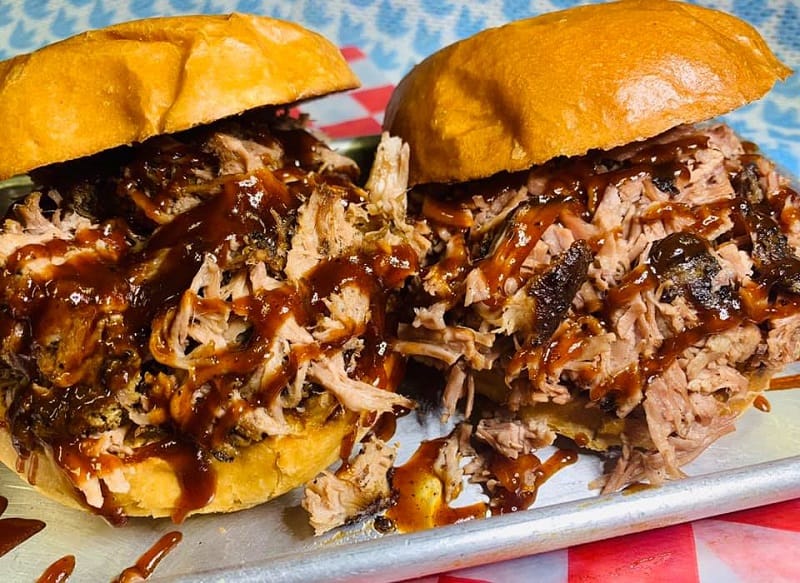
The following tips will help you get the most out of your pulled pork smoking experience.
- Choose the right cut of pork. The best cut for smoking pulled pork is a pork shoulder or Boston butt. This cut is fatty and marbled, making it ideal for slow cooking.
- Trim the fat. It is important to trim the fat off of the pork before smoking. This will help the pork to cook evenly, and the fat won’t cause the smoke to flare up.
- Use a dry rub. A dry rub is a mixture of spices and herbs you rub onto the meat before smoking. This will give the pork flavor and help keep it moist during smoking.
- Choose the right wood. Different types of wood will give the pork different flavors. Hickory, oak, pecan, and cherry are popular for smoking pulled pork.
- Keep the temperature low. Low and slow is the key to making great pulled pork. The smoker should be set to 225-250 degrees Fahrenheit.
- Don’t rush it. Smoking pulled pork can take up to 10 hours, so plan accordingly. The pork is done when it reaches an internal temperature of 195-205 degrees Fahrenheit.
- Rest the meat. Let the pork rest for at least an hour before serving. This will allow the juices to redistribute and the meat to become even more tender.
How To Reheat Pulled Pork
One can use an oven, a slow cooker, an Instant Pot, or a microwave to reheat pulled pork. The simplest way is to place it in a foil-covered dish with some leftover meat juices, broth, or sauce and slowly warm it to 250 degrees.
For added flavor, add some butter on top of the pulled pork or mix in some apple juice while reheating it in the oven. One can also reheat it using a crockpot along with the leftover pan drippings if preferred.
Regardless of the method used, always keep in mind that the quality of the pulled pork will decrease each time it is reheated. So, use these tips wisely and easily enjoy your reheated pulled pork.
How To Reheat Brisket
Reheating leftover brisket can be challenging, as it’s easy to dry out the meat if you’re not careful. Following some simple steps is essential to keep the brisket tender and juicy.
- Firstly, remove the leftover brisket from the fridge and let it sit at room temperature for around 20-30 minutes. Preheat your oven to 325°F, and then place the covered brisket into the oven until the internal temperature reaches 145°F. For pre-sliced brisket, reheat it in the oven at 375 degrees for approximately 20 minutes.
- Another option is to use a smoker, where you will wrap the brisket in foil and heat it over indirect heat.
In both cases, be sure to avoid overheating the meat to ensure that it maintains its excellent texture and taste.
Common Mistakes People Make When Preparing And Cooking Brisket
One of the most common mistakes people make when cooking brisket is not seasoning it properly. Brisket should be seasoned with salt and pepper, garlic powder, onion powder, and other seasonings to give it flavor. If you don’t season it properly, the brisket won’t have much flavor and won’t be as tender as it should be.
Another mistake people make when cooking brisket is not allowing enough time for the meat to cook. Brisket should be cooked slowly, over low heat, for several hours to ensure the meat gets thoroughly cooked and tender. The brisket will become tough and dry if you rush the cooking process.
Lastly, many forget to add a marinade or sauce to the brisket. Brisket is a tough cut of meat, so marinating it or adding a sauce to it helps break down the meat’s connective tissues, adding flavor and tenderness. Without the marinade or sauce, the brisket will become dry and tough.
Common Mistakes People Make When Preparing And Cooking Pulled Pork
One of the most common mistakes people make when cooking brisket is not seasoning it properly. Brisket should be seasoned with salt and pepper, garlic powder, onion powder, and other seasonings to give it flavor. If you don’t season it properly, the brisket won’t have much flavor and won’t be as tender as it should be.
Another mistake people make when cooking brisket is not allowing enough time for the meat to cook. Brisket should be cooked slowly, over low heat, for several hours to ensure the meat gets thoroughly cooked and tender. The brisket will become tough and dry if you rush the cooking process.
Lastly, many forget to add a marinade or sauce to the brisket. Brisket is a tough cut of meat, so marinating it or adding a sauce to it helps break down the meat’s connective tissues, adding flavor and tenderness. Without the marinade or sauce, the brisket will become dry and tough.
These are a few common mistakes people make when preparing and cooking brisket. By seasoning the brisket properly, cooking it slowly over low heat, and adding a marinade or sauce, you can ensure your brisket turns out tender and flavorful.
FAQs
Brisket vs Pulled Pork: Which One Is Healthier?
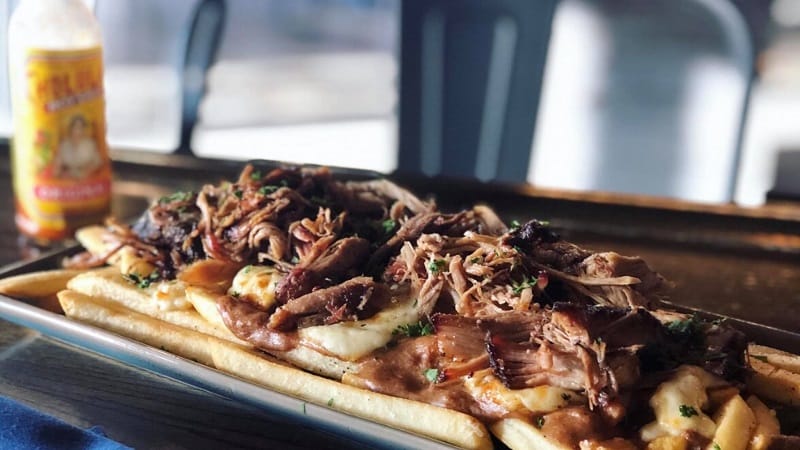
In terms of health, brisket and pulled pork are both relatively healthy options. Brisket is higher in saturated fat, but it has more protein. Pulled pork is lower in calories and saturated fat but has less protein. Ultimately, the decision depends on what your dietary goals are and your overall health goals are.
Pull pork is the way to go if you’re looking for a leaner option. But brisket is an excellent choice if you’re looking for healthy and flavorful. No matter which one you choose, you can enjoy a delicious and nutritious meal.
What Can Cuts Of Meat Be Used For Pulled Pork?
The most common and ideal cut for pulled pork is the shoulder, which includes the front leg and shoulder of the hog. Pork shoulder is heavily marbled with fat, which yields a tender and flavorful result when cooked low and slow. Pork butt, despite its name, is also a cut that comes from the shoulder area and is often used for pulled pork. In terms of personal preference, some may choose to use a boneless pork shoulder for ease of preparation. Overall, the shoulder and butt cuts are the best choices for making delicious and satisfying pulled pork dishes.
How Does The Fat Content Affect The Tenderness And Moisture Of The Smoked Meat?
When it comes to smoking meat, the fat content plays a crucial role in determining its tenderness and moisture. The more fat a cut of meat contains, the more tender and juicy it will be. Fat enhances the meat’s ability to retain moisture and lends a rich flavor to the meat.
Additionally, as the fat melts during the slow smoking process, it helps break down the meat’s proteins, resulting in a flavorful and tender end product. However, low-fat beef can become tough and dry due to the lack of moisture, making it less desirable for smoking. Therefore, when it comes to smoking meat, it’s important to choose cuts that have a good balance of intramuscular fat, or “marbling,” to ensure the meat will be moist, tender, and delicious.
Which Cut Of Meat Is More Commonly Used In Barbecue Competitions: Brisket Or Pulled Pork?
While both have unique flavors and require specific techniques for preparation, brisket remains the most challenging category for most pitmasters. This is because brisket is a tough cut of meat that needs to be cooked low and slow for an extended period until it breaks down and becomes tender.
Pulled pork, on the other hand, uses pork butt, which is the shoulder of the pig. It is a more forgiving cut of meat that is easier to prepare and cook to perfection. Regardless of which cut is chosen, mastering the art of smoking and seasoning is key to a successful barbecue competition.
What Are Some Common Methods For Cooking Brisket And Pulled Pork, And Which Ones Tend To Produce The Best Results?
The key to achieving great results with these meats is using the right cooking methods. Brisket is a tough cut of meat, so low and slow cooking is essential. This means simmering the meat gently for several hours at low temperatures. Smoking brisket is an excellent option that results in a drool-worthy flavor. For optimal results, remove excess fat from the meat before smoking and aim for a quarter-inch to an eighth-inch fat cap.
On the other hand, pulled pork can be cooked either through braising or smoking. For beginners, starting with smoking pulled pork before moving on to more complex preparations like Texas-style smoked BBQ brisket is recommended. Whatever the method, cooking either of these meats low and slow is the key to achieving the best results.
Can You Freeze Brisket Or Pulled Pork Leftovers, And How Long Will They Keep In The Freezer?
According to factual data, the answer is yes! Both pulled pork and brisket can be frozen for up to six months if stored in airtight containers or resealable freezer bags. However, it’s recommended to freeze these meats within 3-4 days from cooking to preserve their quality. To avoid freezer burn, it’s advisable not to slice the brisket before freezing it. For best results, freeze it in a single layer “popsicle” style. When reheating, it’s essential to ensure the meat reaches an internal temperature of at least 165°F to prevent foodborne illness.
When Should Brisket Be Wrapped While Smoking?
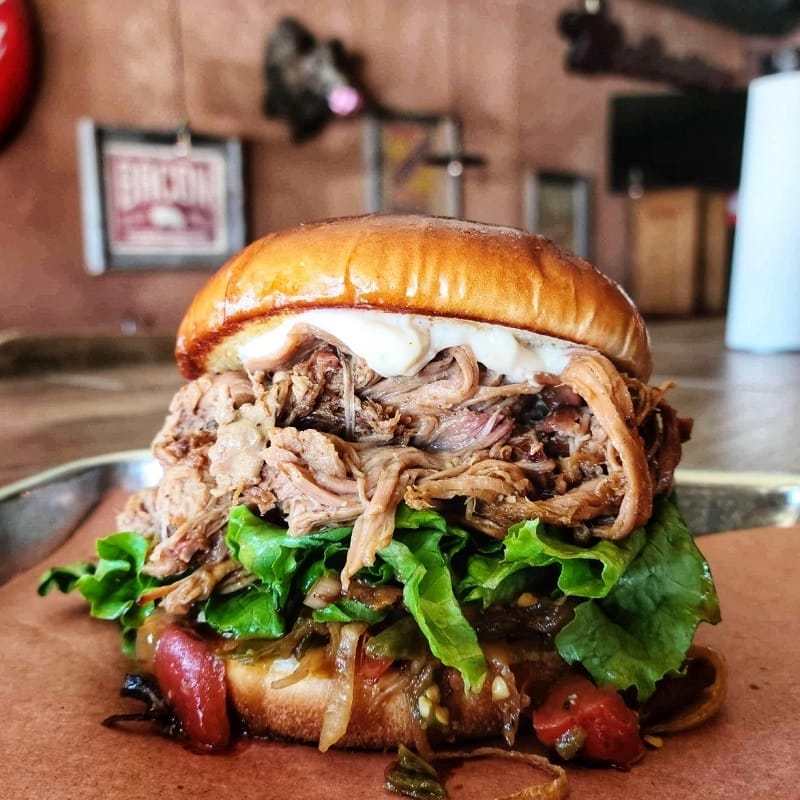
When it comes to cooking brisket, wrapping is a common technique used to create a tender and flavorful finished product. The consensus among barbecue experts is to wrap the brisket when the internal temperature hits around 165°F. However, some pitmasters may wrap based on the appearance of the bark or when the brisket enters “the stall.”
It’s important not to wrap too early to allow the meat to develop a nice crust and smoky flavor. Expert pitmasters suggest wrapping when the internal temperature reaches 150 and 170°F to ensure succulent, juicy meat. Wrapping the brisket will also lock in the color and appearance of the meat. Overall, the best time to wrap a brisket will depend on individual preference and cooking techniques, but wrapping after 5-6 hours of smoking at 250°F is a good starting point.
Conclusion: Pulled Pork vs Brisket
Overall, both pulled pork and brisket are delicious and versatile meats that can be enjoyed in various ways. The key is determining the right based on your flavor preferences, budget, and cooking time.
We hope this was helpful! If you have any other questions about brisket vs pulled pork, feel free to leave them in the comments below.
References:
- https://www.thespruceeats.com/selecting-meat-cuts-for-pulled-pork-331619
- https://www.ncbi.nlm.nih.gov/books/NBK216525/

Hey readers! Chip Holland here, and I’m a Manager of this website. My passion for writing about it only matches my passion for BBQ. Follow my blog for mouth-watering recipes, tips, and tricks for the perfect smoke, grill, and BBQ. I’m sure you won’t be disappointed!
